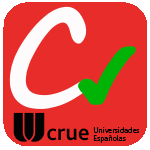Title
Development of a novel method to characterize mean surface peak curvature as a signature of tribological performance of dental implant surfacesAuthor (from another institution)
Publication Date
2020Other institutions
University of HuddersfieldVersion
PostprintDocument type
Journal ArticleJournal ArticleLanguage
EnglishRights
© 2020 IOP PublishingAccess
Open accessPublisher’s version
https://doi.org/10.1088/2051-672X/ab82a3Published at
Surface Topography: Metrology and Properties Vol. 8. N. 2, 2020Publisher
IOP PublishingKeywords
dental implant
implant integrity
Surface topography
feature parameters ... [+]
implant integrity
Surface topography
feature parameters ... [+]
dental implant
implant integrity
Surface topography
feature parameters
peak curvature [-]
implant integrity
Surface topography
feature parameters
peak curvature [-]
Abstract
The integrity of dental implant surfaces might be compromised during surgical insertion. Wear and topographical modifications can occur during implant insertion, which can potentially have clinical im ... [+]
The integrity of dental implant surfaces might be compromised during surgical insertion. Wear and topographical modifications can occur during implant insertion, which can potentially have clinical implications. Accordingly, the analysis and prediction of the wear behaviour of dental implant surfaces is fundamental. Surface mean curvature is a key topographical parameter in contact mechanics, related to wear and plastic deformation; however, there is not a consensus on its characterization. In this paper, a critical analysis of the feature parameter Spc from ISO 25178-2 is carried out, which addresses its limited ability to characterize dental implant surfaces. A novel alternative parameter (named 'relative mean peak curvature' ΔSdq) is presented and evaluated in representative dental implant treatments. The obtained results suggest a positive correlation between the surface peak curvature and its tribological signature in biomedical implants. Although biomedical experiments are needed to validate this correlation, the novel method is presented as a tool for future studies. [-]
Collections
- Articles - Engineering [758]
The following license files are associated with this item:






















